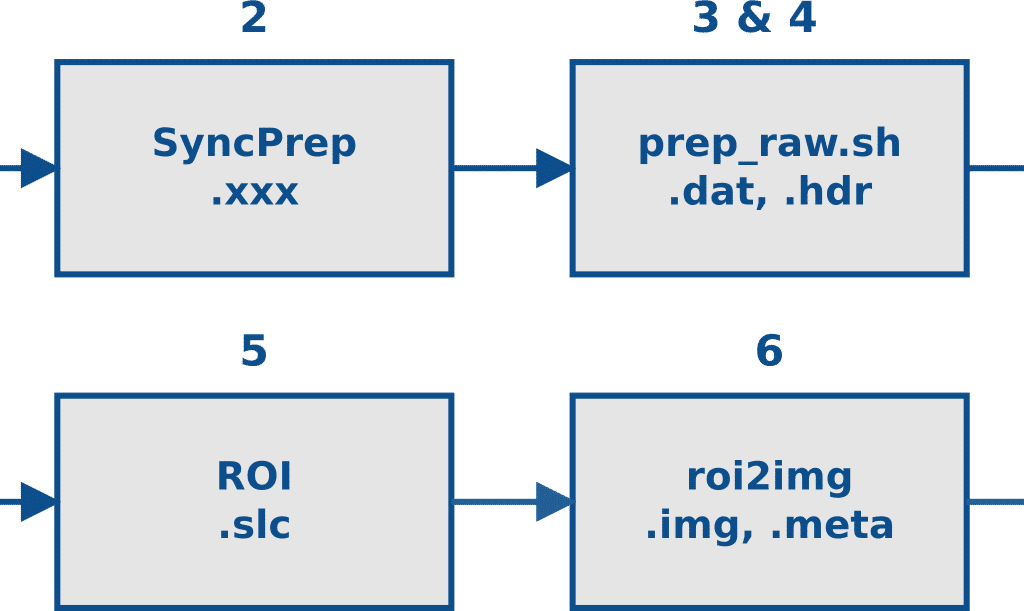The Alaska Satellite Facility was tasked by NASA with creating a digital archive of focused synthetic aperture radar (SAR) products from data collected by NASA’s Seasat mission.
The basic steps involved in this process are as follows:
- Capture the raw signal data from tape onto disk
- Validate and byte-align the raw signal data
- Decode the byte-aligned signal data into decoded raw swaths
- Pre-process decoded raw swaths to create cleaned raw swaths
- Focus cleaned raw swaths into individual single look complex (SLC) images
- Create georeferenced ground range amplitude images from the SLC images
- Package the georeferenced images into a distributable format

Seasat Processing Project Data Flow: Starting with raw signal data on tapes, the Seasat data was successively (1) captured to disk, (2) validated and byte-aligned, (3) decoded, (4) cleaned of bit errors and discontinuities, (5) focused into SLC imagery, (6) processed into georeferenced ground range products, and (7) packaged as HDF5 with XML metadata. Step 2 was performed using the Vexcel product SyncPrep. Step 5 was accomplished using the repeat pass interferometry (ROI) package from JPL. All other steps utilized software developed in-house at ASF.
These pages tell the story of the data cleaning and product processing in detail.
1. Raw Telemetry
2. Decoder Development
3. Decoded Data Analysis
4. Data Cleaning (Part 1) (Part 2)
5. Classification of Bad Data
6. Slope Issues
7. Cleaned Swath Files
8. Focusing Challenges
9. From Swaths to Products
10. Quality Issues
11. Data Product Formats
Written by Tom Logan, July 2013




